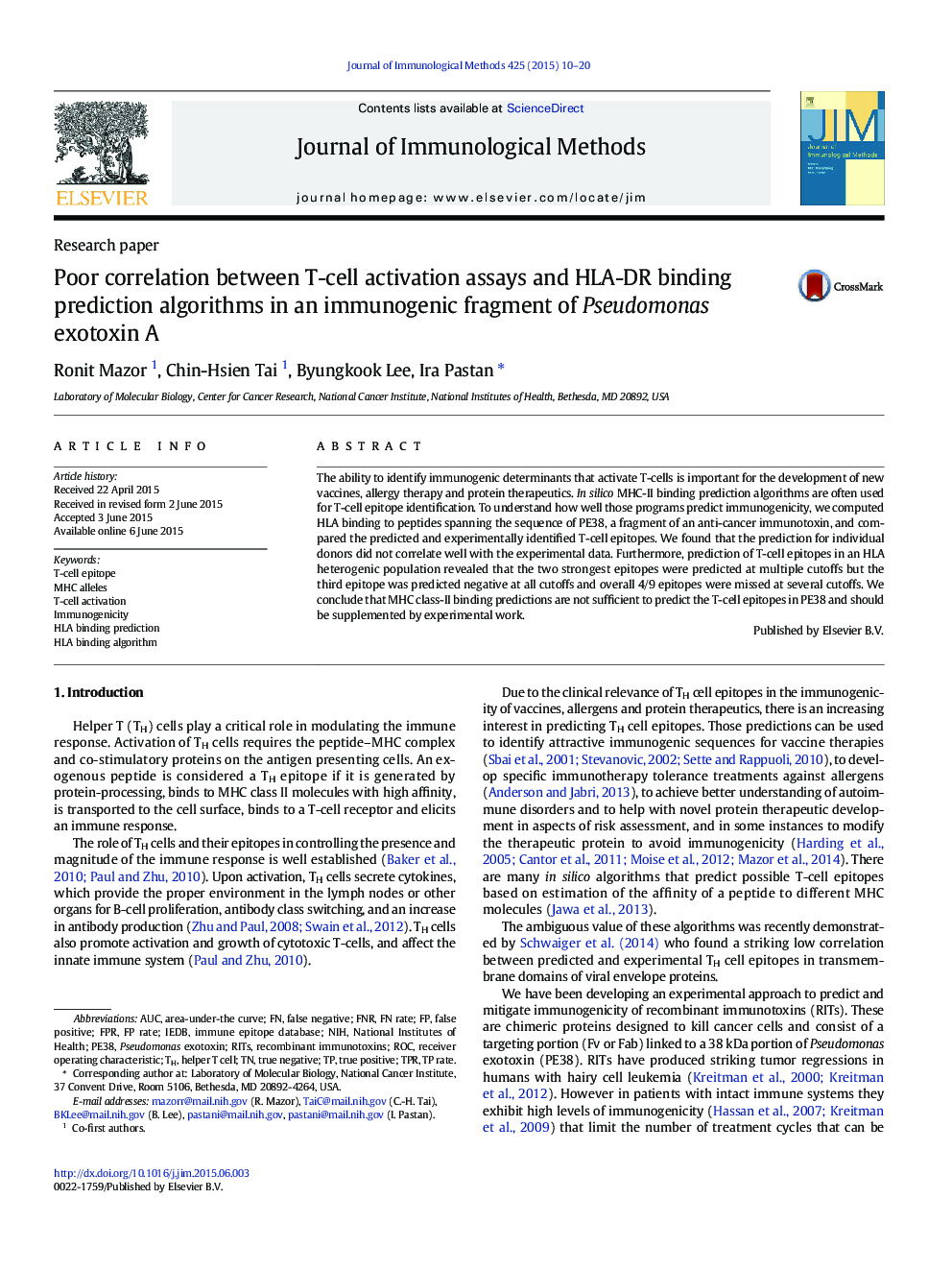| کد مقاله | کد نشریه | سال انتشار | مقاله انگلیسی | نسخه تمام متن |
|---|---|---|---|---|
| 2088086 | 1545684 | 2015 | 11 صفحه PDF | دانلود رایگان |

• Comparison of experimental data and in silico class II epitope predictions
• Use of binarization and multiple thresholds to analyze HLA class II prediction
• In silico methods failed to predict 4/9 epitopes.
• In silico methods correctly predicted 2 major epitopes.
The ability to identify immunogenic determinants that activate T-cells is important for the development of new vaccines, allergy therapy and protein therapeutics. In silico MHC-II binding prediction algorithms are often used for T-cell epitope identification. To understand how well those programs predict immunogenicity, we computed HLA binding to peptides spanning the sequence of PE38, a fragment of an anti-cancer immunotoxin, and compared the predicted and experimentally identified T-cell epitopes. We found that the prediction for individual donors did not correlate well with the experimental data. Furthermore, prediction of T-cell epitopes in an HLA heterogenic population revealed that the two strongest epitopes were predicted at multiple cutoffs but the third epitope was predicted negative at all cutoffs and overall 4/9 epitopes were missed at several cutoffs. We conclude that MHC class-II binding predictions are not sufficient to predict the T-cell epitopes in PE38 and should be supplemented by experimental work.
Journal: Journal of Immunological Methods - Volume 425, October 2015, Pages 10–20